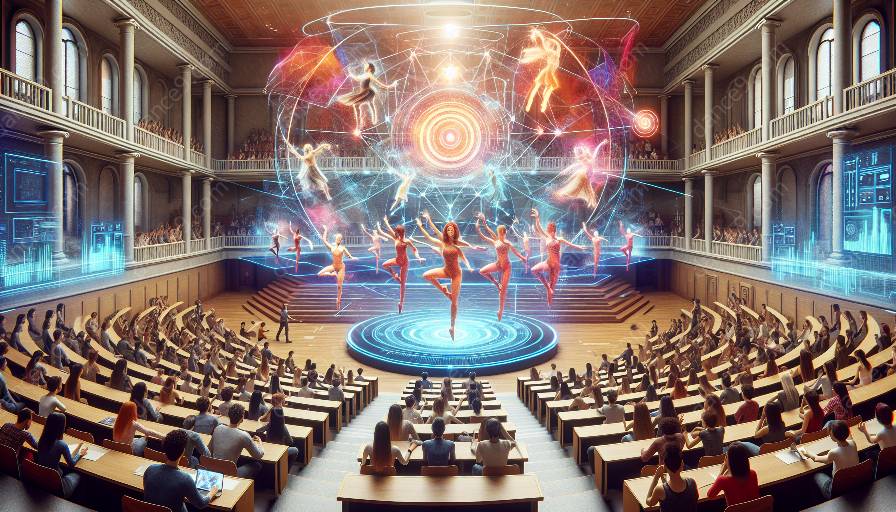Virtual reality technology has revolutionized various industries, and its integration into university dance performances has opened up new creative and immersive possibilities. The seamless blend of dance and technology has resulted in captivating experiences that push the boundaries of traditional performances. Let's delve into the innovative applications of virtual reality in university dance performances and the impact it has on both the audience and performers.
Enhancing Audience Engagement
One of the significant benefits of integrating virtual reality into university dance performances is its ability to enhance audience engagement. By immersing the audience in a virtual world, dancers can create captivating narratives and environments that transcend the limitations of a traditional stage. This level of engagement fosters a deeper connection between the audience and the performance, leading to a more memorable and impactful experience.
Expanding Creative Possibilities
Virtual reality technology provides dancers and choreographers with an expansive canvas for creativity. By incorporating virtual environments and interactive elements, dancers can bring their artistic visions to life in ways that were previously unimaginable. This opens up new avenues for experimentation, pushing the boundaries of traditional dance performances and allowing for innovative storytelling and expression.
Immersive Training and Rehearsals
Universities are utilizing virtual reality technology to enhance dance training and rehearsals. Through VR simulations, dancers can practice and refine their techniques in virtual spaces, allowing for a more immersive and comprehensive rehearsal experience. This innovative approach to training not only improves dancer performance but also introduces a new dimension of learning and skill development.
Accessible Dance Experiences
Virtual reality in university dance performances also contributes to making dance more accessible to a wider audience. Through VR headsets and live-streamed performances, individuals who may not have access to traditional dance venues can still partake in the artistic expression and cultural significance of dance. This inclusivity expands the reach of dance performances, promoting diversity and cultural exchange.
Impact on Dance Education and Research
The integration of virtual reality in university dance performances is influencing dance education and research. Students and scholars can explore the intersection of technology and dance, conducting interdisciplinary studies on the impact of VR on audience perception, choreography, and storytelling. This symbiotic relationship between dance and technology paves the way for academic advancements and insights into the future of performance arts.
Collaborative Opportunities
Virtual reality also facilitates collaborative opportunities among dancers, technologists, and artists. Interdisciplinary projects that merge dance with VR technology enable unique collaborations and skill-sharing, leading to the development of groundbreaking performances that combine artistry and technological innovation. The integration of different disciplines fosters a rich tapestry of creativity and expertise, pushing the boundaries of traditional dance performances.
Future Outlook and Continued Innovation
The evolving landscape of virtual reality and its applications in university dance performances heralds a future of continued innovation and experimentation. As technology advances, the potential for even more immersive and interactive experiences becomes increasingly promising, paving the way for new artistic expression and audience engagement. The fusion of dance and technology holds endless possibilities for the future of performance arts.

































